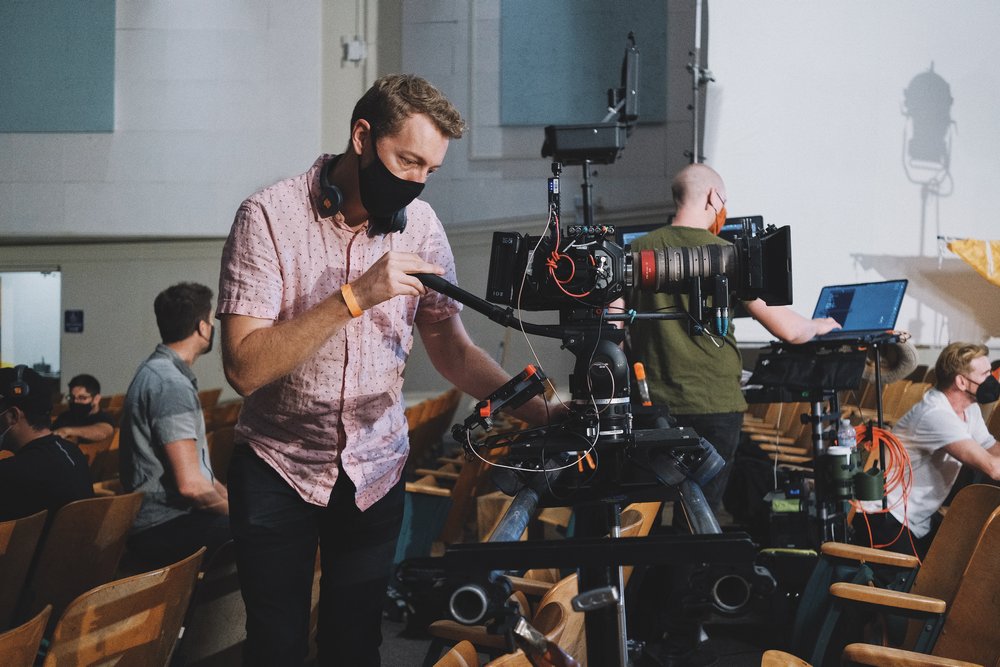


Video shoots happening outside your home base region present a lot of challenges. But they often also present an opportunity to film someone or something special – an industry influencer who’s going to endorse your product, an important customer, your company’s new office or your latest executive hire, etc.
We’ve done quite a few of these, and have developed some best practices. We’ve been the team organizing the out-of-town shoot on behalf of our clients, and we’ve also been the ones organizing a shoot here in San Francisco on behalf of a remote team.
Here are our top 5 considerations for out-of-town shoots.
One of the quickest ways to get moving on an out-of-town shoot is to hire a local fixer. This is a producer who lives in your target city or area, and who becomes your point person on the ground. They bring their local experience and network to your project, thereby making it easy to crew up and find everything you need – locations, casting directors, accommodations, permits, etc.
Local fixers are great. But all that knowledge and ability to execute quickly often comes at a premium.
Perhaps your shoot is a simple interview in a conference room. In that case, sending your trusted team from your home base is likely to yield great results, because the shoot is contained, the space is easy to control, and there’s a small number of on-camera talent.
Or, perhaps your shoot involves 100 extras in a city park with a hot air balloon landing mid-shot, and a tap-dancing giraffe. In this case, you’re going to want someone with local knowledge to deal with the city and call upon their trusted crew members in that area, who will be able to handle this complex project without you having to fly and put up dozens of people.
Most likely, your project is somewhere in between. Consider your needs, and when in doubt, call in the pros.
Out-of-town shoots often require working with new people, because it’s rare that you can afford to fly, accommodate and feed your entire crew, plus your marketing team, etc. For this reason, trusted referrals become extremely important. And having a video chat with these folks, just the way you would for an internal hire, will tell you lots about them: promptness, presentation, communication and social skills, etc.
All that said, you’ll feel most comfortable if you have someone on your team that you know can do just about anything. This will be someone you’ve worked with before and with whom you have a strong relationship. They’re probably your go-to producer or director in your home region. They’re knowledgeable and experienced, but still willing to jump into the nitty gritty when needed.
It seems obvious, but out-of-town shoots bring up extra costs in a hurry. When budgets get stretched, the corner-cutting begins. Ironically, these are the shoots where you most need extra time to deal with unexpected developments.
Of course you need to be efficient with your budget, so having 1 or 2 key people arrive early is usually all you need. If you can coordinate access to the location as well, you’re likely to notice something that can be taken advantage of or taken care of with that extra time, thereby maximizing the value of your shoot time, or saving yourself from imminent disaster.
Chances are you won’t be coming back any time soon. So make sure to maximize your time. While having a clear focus is a good thing, that needs to be balanced with the practical realities of travel time, costs, and availability. If needed, get input from colleagues – a quick brainstorm over coffee can lead to an idea that makes the whole trip much more valuable.
Another factor that comes into play here is energy. You’ve traveled, perhaps you’ve lost some sleep. It’s been a long shoot day, and there’s a strong tempation to call it quits and go back to the hotel. But if you can push through and get that one last shot or scene, you just might capture something that increases that value of the whole trip exponentially.
It’s the perfect excuse to schedule a tasty coffee delivery for 1 hour before the shoot is scheduled to end :)
Huh? Let us explain…
Most people want to help. And unless you’re in a big film hub like LA, they especially want to help people making movies (or even commercials!). So when you notice that little cafe that would be perfect for the shot you came up with at lunch, don’t hesitate to let them know that you’re just here for the day and you could really use their help.
Most of us want our city to have a good reputation for hospitality, and you just might get a little boost from a new friend. Just make sure to return the favor back in your home town.
There are many more subtleties to learn about out-of-town shoots, but hopefully these 5 tips have given you a framework to think about local knowledge, backup plans, extra time, and getting everything you can from your limited stay in a new place.
As always, reach out with questions, and happy filming.























